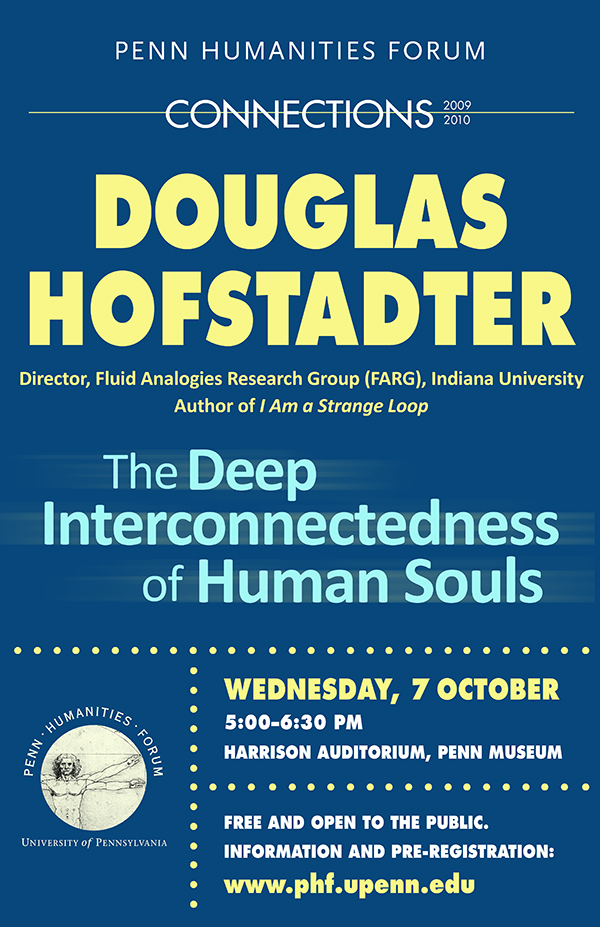A human soul is no longer thought of as an ethereal piece of matter that floats away into heaven when the person dies. But what, then, if anything, is it? If one believes that a human soul is a special kind of pattern that arises in a human brain over the course of a lifetime, then it follows that its pattern, like any pattern, is subject to copying in many substrates and at various levels of fidelity. Like a picture that can be realized with hundreds of coarse-grained pixels or millions of fine-grained pixels, copies of human souls come in all grades. And where do these copies of a given human soul reside? What, that is, are the other substrates that house a given soul? Other human brains, of course, some in rather detailed ways, some in very crude ways. Thus a human soul, contrary to what we tend to think, is a floating, distributed entity rather than an entity limited to one sole location.
Douglas Hofstadter is College of Arts and Sciences Distinguished Professor of Cognitive Science at Indiana University, where he directs the Center for Research on Concepts and Cognition, otherwise known as the Fluid Analogies Research Group or FARG, which explores the mechanisms of intelligence through computer modeling.
Hofstadter is best known for his work on consciousness, thinking, and creativity, which is most famously expressed in his Pulitzer Prize-winning book, Gödel, Escher, Bach: an Eternal Golden Braid, first published in 1979. In his most recent book, I Am a Strange Loop, he further develops the message in GEB, demonstrating how the properties of self-referential systems can be used to describe the unique properties of minds.
The son of Nobel Prize-winning physicist Robert Hofstadter, Douglas graduated with distinction in Mathematics from Stanford and received his PhD in Physics from the University of Oregon. In 2009, he was elected to the American Academy of Arts and Sciences and the American Philosophical Society.
Prof. Hofstadter's interests include music, visual art, the mind, creativity, consciousness, self-reference, translation, and mathematics. He collects and studies cognitive errors (mainly speech errors), bon mots, and analogies, and his long-time observation of these diverse products of cognition, as well as his theories about the mechanisms that underlie them, have exerted a powerful influence on the architectures of the computational models that he and other FARG members developed. Many recursive sequences and geometric constructions are named after him.
Distinguished Professor of Cognitive Science, Indiana University



